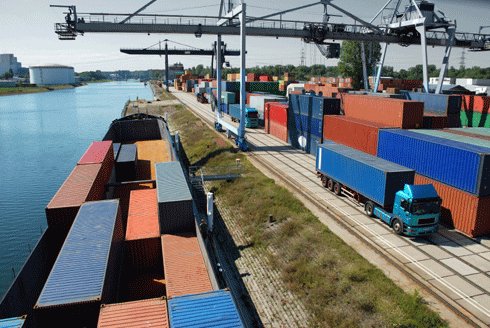
|
Published: 15 September 2014
People power unearths a hidden world in WA soils
Why would 400 or more Western Australians, trowels and GPS devices in hand, take to the great outdoors to collect dirt? Because each has been involved with MicroBlitz, a world-first crowd-sourced research project that uses DNA sequencing technology to identify the many different microorganisms inhabiting soils.
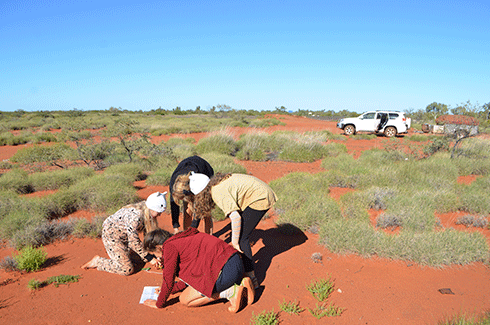
|
|
Bush ranger cadets from Mount Lawley Senior High School in WA collecting soil samples on a trip to Millstream National Park. Credit: Andrew Paul
|
The project, led by University of Western Australia (UWA) Winthrop Professor, Andrew Whiteley, is the first of its kind in Australia. It follows a pioneering 2011 study led by Professor Whiteley in the UK, in which scientists created a profile of soil bacterial communities across Great Britain.
‘We proved the concept of large-scale soil microbial mapping in the UK with trained scientists,’ said Professor Whiteley. ‘But when attempting the same approach in WA, we were faced with an area 22 times the previous map size.
‘Due to this increase in scale, we had to be creative about how we sampled over much larger distances with the staff we had. So we decided on a citizen science approach and MicroBlitz was born.’
The project’s approach is a variation on the well-known BioBlitz (and the uniquely Australian Bush Blitz) approach, where a group of volunteers work together for short period of time to collect and identify as many species as possible within a specific area.
‘MicroBlitz aims to decode the environmental genome of WA soils, much like was done for the human genome,’ explains Prof Whiteley. ‘This is the first time in the world citizen science has been used to collect and return soil samples which scientists then analyse.’
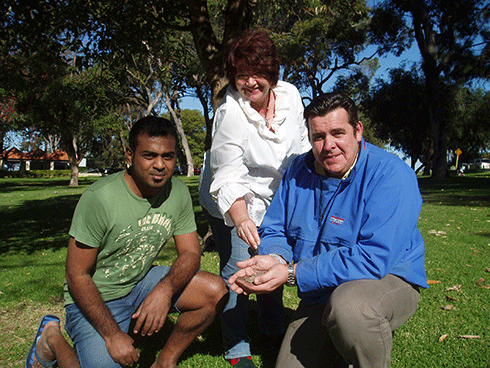
|
|
The three key people behind MicroBlitz (l. to r.) Deepak Kumaresan, Deborah Bowie and Andrew Whiteley. Credit: MicroBlitz
|
Why soil microbes?
Soil is a complex habitat that is home to myriad microorganisms – bacteria, fungi, protozoa and nematodes – collectively known as soil microbiota. A handful of soil can easily contain as many as 10,000 species of these tiny life-forms.
Microbiota are the main engine driving various biological and chemical reactions in the soil – including those involved in land rehabilitation, biodiversity conservation, soil productivity, plant growth, decomposition, and greenhouse gas regulation.
For instance, soil microbes play a key role in establishing and regulating plant diversity. A 2007 study suggested that as many as 20,000 plant species depend on these microbes for growth and survival, especially in nutrient-poor soils.
This plant root/microbe intimacy occurs in the tiny cosmos known as the rhizosphere – the soil envelope immediately surrounding the roots. Here, bacteria and other microorganisms continually feed on plant secretions and dead cells shed by the roots, and share organic and inorganic nutrients with their host plant.
In a recent study Dr Kristiina Karhu from the University of Helsinki examined how soil microbes can influence global processes including those that determine atmospheric carbon levels. She found that the interplay of global rising temperatures and soil microbes may have far-reaching consequences.
‘Our findings suggest that warming will increase the activity of soil microbes to a greater extent than was previously expected, which could have implications for future rates of climate change,’ said Dr Karhu.
One of the best studied aspects of soil microbiota is their intimate relationship with plants. Dr Roeland Berendsen, a microbiologist from Utrecht University in The Netherlands, has said that microbial communities can improve the health of agronomically important plants – for example, through increased nutrient availability, pathogen protection, and growth stimulation. MicroBlitz should add to the world’s knowledge about these relationships.
Getting the dirt
Since MicroBlitz began in March 2013, more than 2000 sampling kits have been mailed to volunteers located across WA; more than 1500 of these have been analysed by the MicroBlitz team.
‘As well as the general public MicroBlitz recruits and trains UWA student volunteers as interns, it is a win-win situation which provides the project with helping hands and provides students with valuable and highly relevant work experience opportunities,’ said Deborah Bowie, the MicroBlitz project manager.
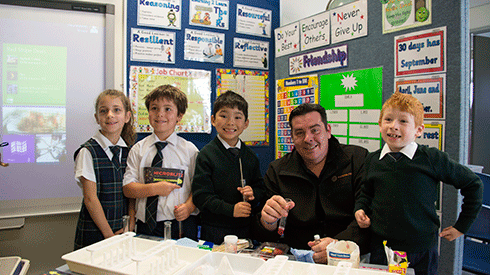
|
|
Prof Andy Whiteley runs a DNA extraction exercise for Year 2-3 students from Great Southern Grammar in Albany, WA. Credit: Kanako Tomita
|
In a typical week, the team at the UWA lab would receive 10 or more soil samples. Each contains one or more 200-gram bags of soil, a completed site record sheet (detailing GPS coordinates, etc.) and a re-usable string and peg quadrat for marking out the sample site.
Around 5 g of the sampled soil is put aside for archiving and genetic analysis – these days, costing as little as $20 per sample – in which a fragment of the 16S ribosomal RNA gene is sequenced. This gene serves as a sort of species barcode that helps assess microbial identity. The remainder of the soil sample is kept for chemical analysis, including measuring levels of carbon, nitrogen and potassium.
Genes tell a story
Armed with the genetic information derived from MicroBlitz, Prof Whiteley and his team will be able to identify the many different microbial species inhabiting WA’s soils. This will enable them to construct a map of soil microbes across the state, and to determine which microbial profile is linked to a particular type of vegetation.
‘Downstream analyses [will] allow us to determine what constitutes a “good” versus “bad” microbial community for things such as agriculture and rehabilitation efforts,’ says Prof Whiteley.
‘Much the same way that a disease and cure are referenced to databases of symptoms and treatments, we aim to use this strategy to monitor and diagnose the health of the soils and actions that may be needed to improve that soil health.
‘Once we know which microbial communities are linked to a poor-yielding crop and where they are located, for example, more efficient strategies can be developed to make better use of this particular soil.
‘In the longer term, we would like to integrate our soil microbial data with other large-scale biological datasets, to examine links between soils, plants and the fauna around them on much larger landscape and continental scales.’
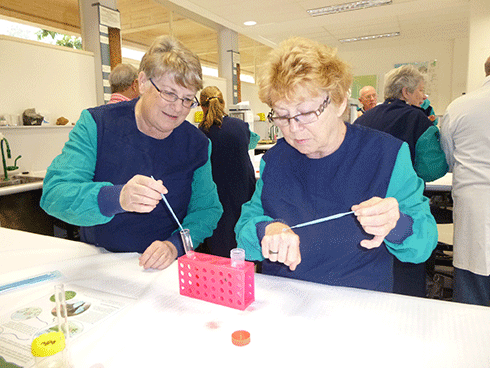
|
|
People of all ages are involved with MicroBlitz: at this workshop for seniors, participants learned how to do DNA extraction. Credit: Sharlene Boey
|
While the MicroBlitz team is still collecting samples and crunching data, some preliminary results are already at hand from a 2013 survey of soil samples from farming areas around Albany.
In the study, led by UWA Honours student Sharlene Boey, genetic analysis of the soils sampled revealed they predominately hosted bacteria belonging to the phylum Firmicutes.
Bacteria from this phylum are not commonly found at such high levels in soils. They are known for their ability to generate drought-resistant spores, so their presence may hint at the environmental conditions that have influenced this soil.
‘These initial results suggest that our WA soils may represent quite a harsh environment for soil microbes,’ said Professor Whiteley.
‘The key now is to see if this pattern is repeated over the state and how these major groups contribute to the way our soils function.
The MicroBlitz data prised from WA’s soils could answer a host of other questions. For a start, Dr Berendsen would like to know, ‘Where do the bacteria that influence our lives reside when they are not on their (human/animal/plant) host?’



